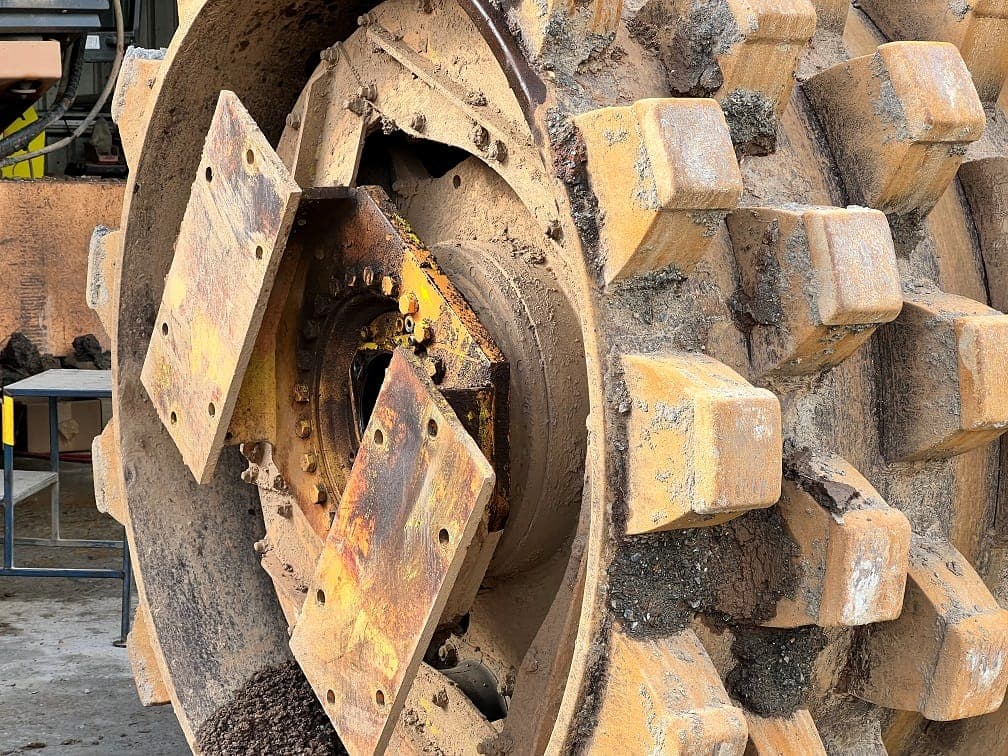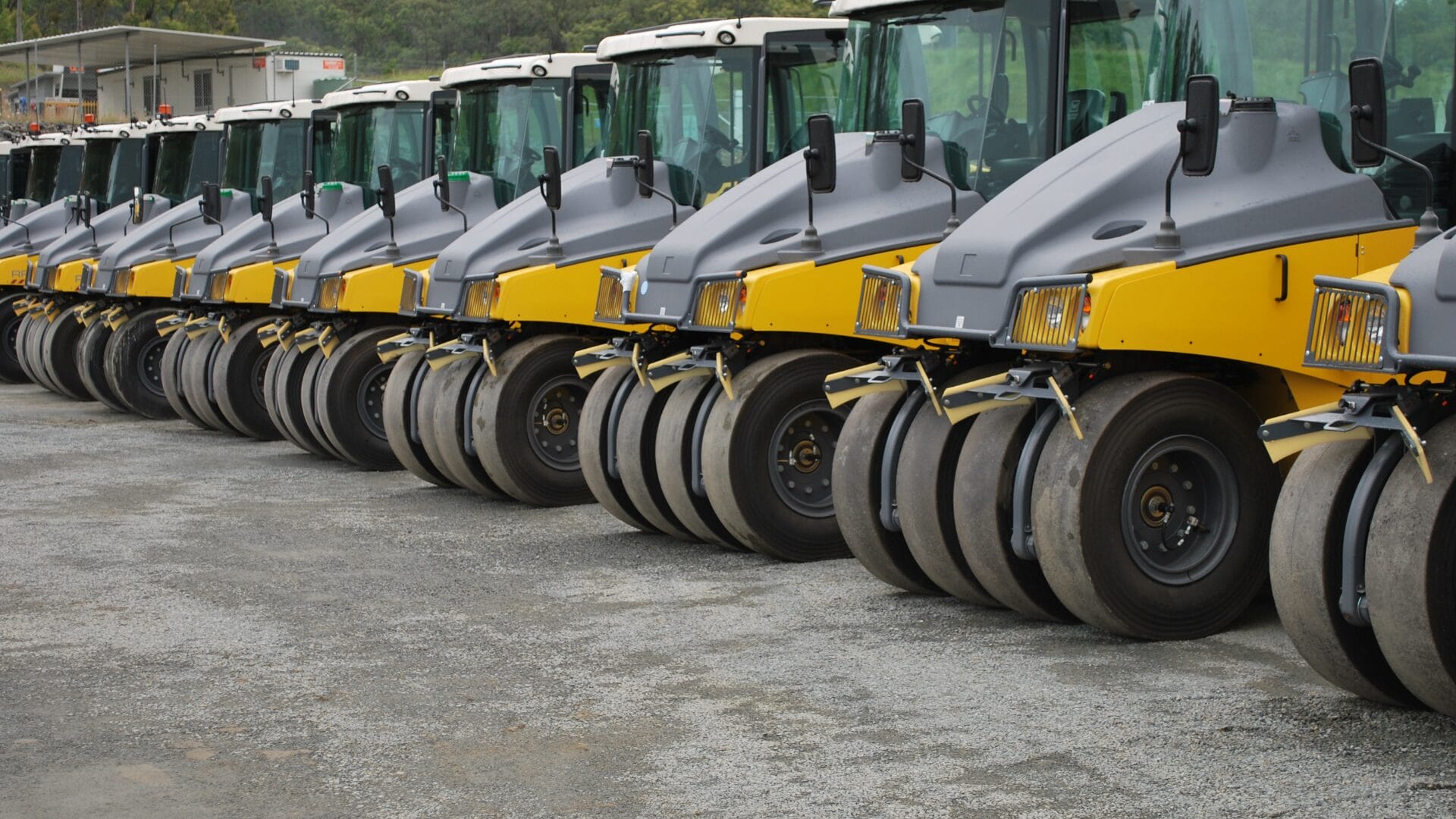For most of us in the construction game, there comes a point when it’s clear the time is right to upgrade to new compaction equipment.
Sure, you can keep replacing parts, and justify your decision not to upgrade by telling yourself, ‘I can’t buy a new roller just for this job’, or, ‘If I replace the pumps it’ll be like new.’
We’re big believers in compaction equipment repairs and spare parts – we even have a multimillion-dollar parts inventory around Australia. But sometimes you’re better off moving on and purchasing new compaction equipment. And like most machinery, ageing rollers and other compaction equipment will let you know when it’s time to sell them on. You just have to be listening.
The five tell-tale indicators which may mean it’s time to upgrade to new compaction equipment
For starters, there are the obvious signs – like the feeling that your compaction equipment is always in the shed for repairs, or you’re constantly on the phone to your local mechanic trying to troubleshoot a niggly problem or diagnose a new noise.
But there are also more subtle signs that, if ignored, may turn out to be costly.
Over 60 years in the game we’ve learnt a lot of lessons – some sooner than others, and some definitely cheaper than others! One thing we understand better than most is that it can be difficult to know when the time is right to upgrade – but it’s easier if you follow our advice.
Worn or damaged articulation, thin drums, poor compaction, low hydraulic power or a smoky engine? It could be time to upgrade to new compaction equipment!

How do you know when to upgrade to new compaction equipment? There are 5 clear signs:
- Increased repair costs
- Reduced capacity to complete the task
- Ongoing reliability issues impacting efficiency and profitability of each project
- Parts become less available
- Time is right for optimum resale price
Let’s look at each point in a little more detail.
1. Increased repair costs
Got your mechanic on speed dial? That’s not a good sign! Just like a beloved classic car you might be hesitant to trade in, older compaction equipment tends to spend a lot more time in the shop than new compaction equipment.
This isn’t a secret, but it might be a good idea to keep a spreadsheet with the number of days your compaction equipment is in for repairs each year. That way you can track the increase over the life of the roller, and make a decision on the right time to upgrade.
2. Reduced capacity to complete the task
A subtle sign that something’s not quite working the same as it did previously is the compactive effort you see when you’re operating. As pumps get older and fluid starts to bypass, you may notice a noticeable drop off in results. This is often the first sign that something’s not working like it once did.
Keep an eye out for reduced compaction effort. If you need to do more passes or drive considerably slower to get the same results as you used to, it may be time to act before something more serious (and expensive) happens!
3. Ongoing reliability issues impacting efficiency and profitability of each project
Your jobs are hard enough to coordinate without you having to worry about whether your equipment is going to go the distance. Last-minute replacement hires or contingency plans can be expensive, so it’s important that you feel confident when quoting on jobs that you’ll be able to rely on your compaction equipment.

4. Parts become less available
At Conplant we have a huge parts inventory across Australia. If we don’t have it, or we can’t get it in, it’s probably not being made anymore! We stock parts for a huge range of rollers, but we do regularly see parts go out of production.
If you want to chat with a Conplant parts expert to see if they’re still making parts for your roller, please give us a call on 1300 166 166 – we’d love to help you out.
5. Time is right for optimum resale price
An area that is often overlooked by people thinking about releasing their favourite roller is the value it holds in the marketplace. Everybody understands that as construction machinery gets older, its value diminishes pretty quickly. The same goes for compaction equipment.
We buy and sell a lot of secondhand rollers, and one thing we know for sure is that the general appearance and the hours on the clock are key factors that help determine the value. Hold on too long, and you miss your opportunity for optimum return – or worse, something costly breaks, and you’re stuck with an expensive garden ornament.

Our golden rule: Listen to your staff and operators
Your staff and your operators can often be pretty astute judges on when it’s time to upgrade new equipment. Sure, they’re not the ones paying the bill – but they’re using the machines every day, and they’re the best ones to know when these five signs are starting to emerge.
Take their advice, and combine it with your own judgement on how to balance lost time as a result of preventative maintenance or breakdown response.
When your favourite old roller becomes the butt of their jokes, it may be time to take a closer look at the condition of the roller and its service history to see whether it might be time to trade it in for new compaction equipment.
Suggested reading: With the cost of construction equipment continuing to rise, smart operators are using a few tricks to get more work – and more value – out of their machines. Here are 5 simple ways to extend the life of your Wacker Neuson roller.



